We provide rapid and professional humanitarian services.
The mission of the Greater Amsterdam Volunteer Ambulance Corps Inc. is to provide rapid, professional, humanitarian services essential to the health and well being of Montgomery and Fulton Counties, as well as our neighbors. Our members will serve as role models, actively participate in our community and strive to effectively and efficiently provide both basic and advanced life support services deemed to be excellent by the people we serve.
We’re there when you need us.
We perform daily emergency medical treatment and transportation of the sick and injured.
We invest in EMS development.
We play a leading role in implementing standards, policies and procedures that lead our region in EMS development.
We provide options when you need them.
At GAVAC we help link our community to specialized healthcare to the Capital region and beyond.
We’re community focused.
We perform aggressive community outreach, education and training.
GAVAC community outreach services.
Presentations covering life safety and proper use of the 9-1-1 system are available to schools, home and businesses for any age group. In addition, all presentations are available in both English and Spanish. For information or to schedule a presentation, please contact us.
Life safety presentations.
Station tours.
Proper use of the 9-1-1 system.
Safety tips for businesses.

